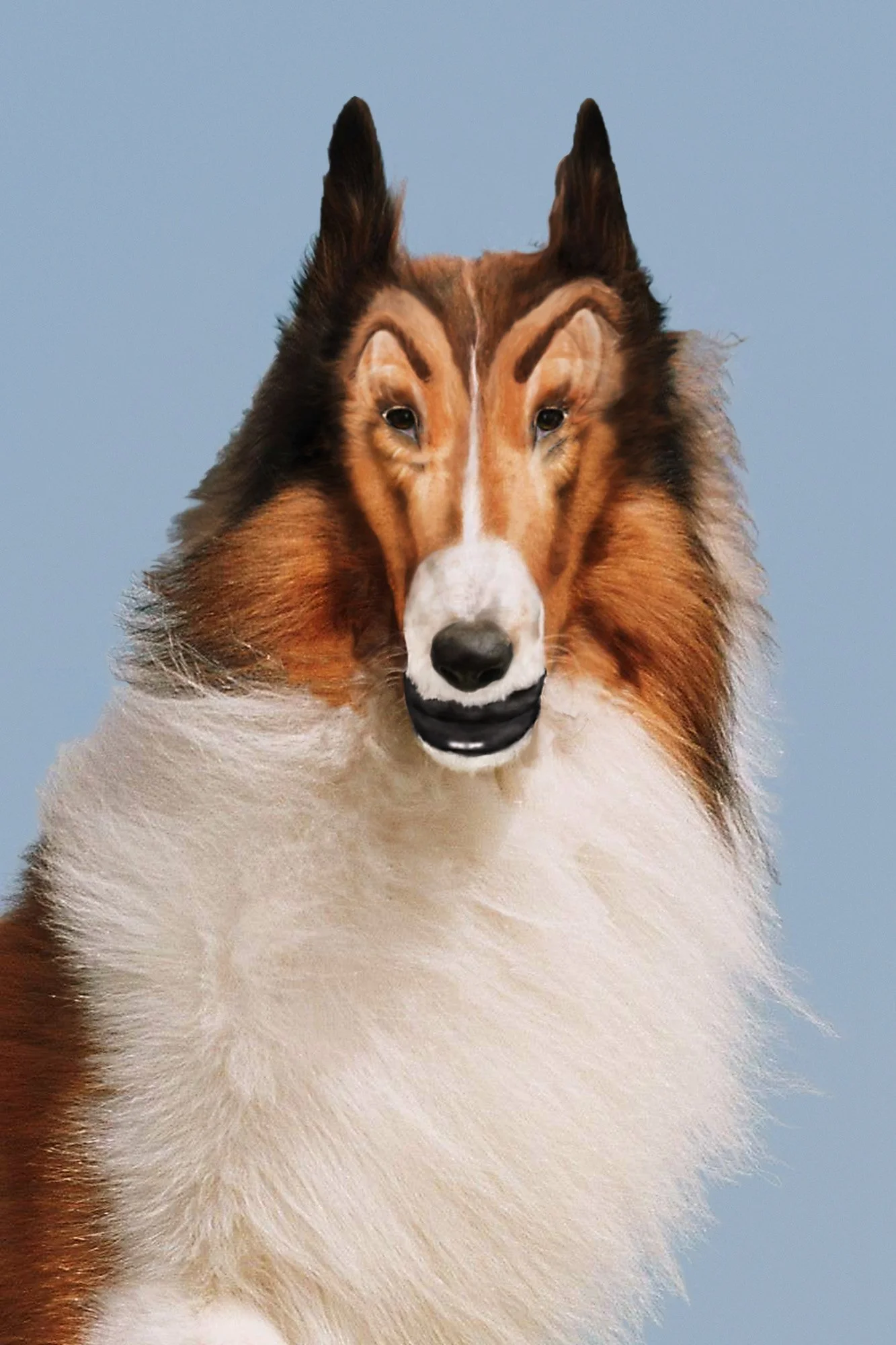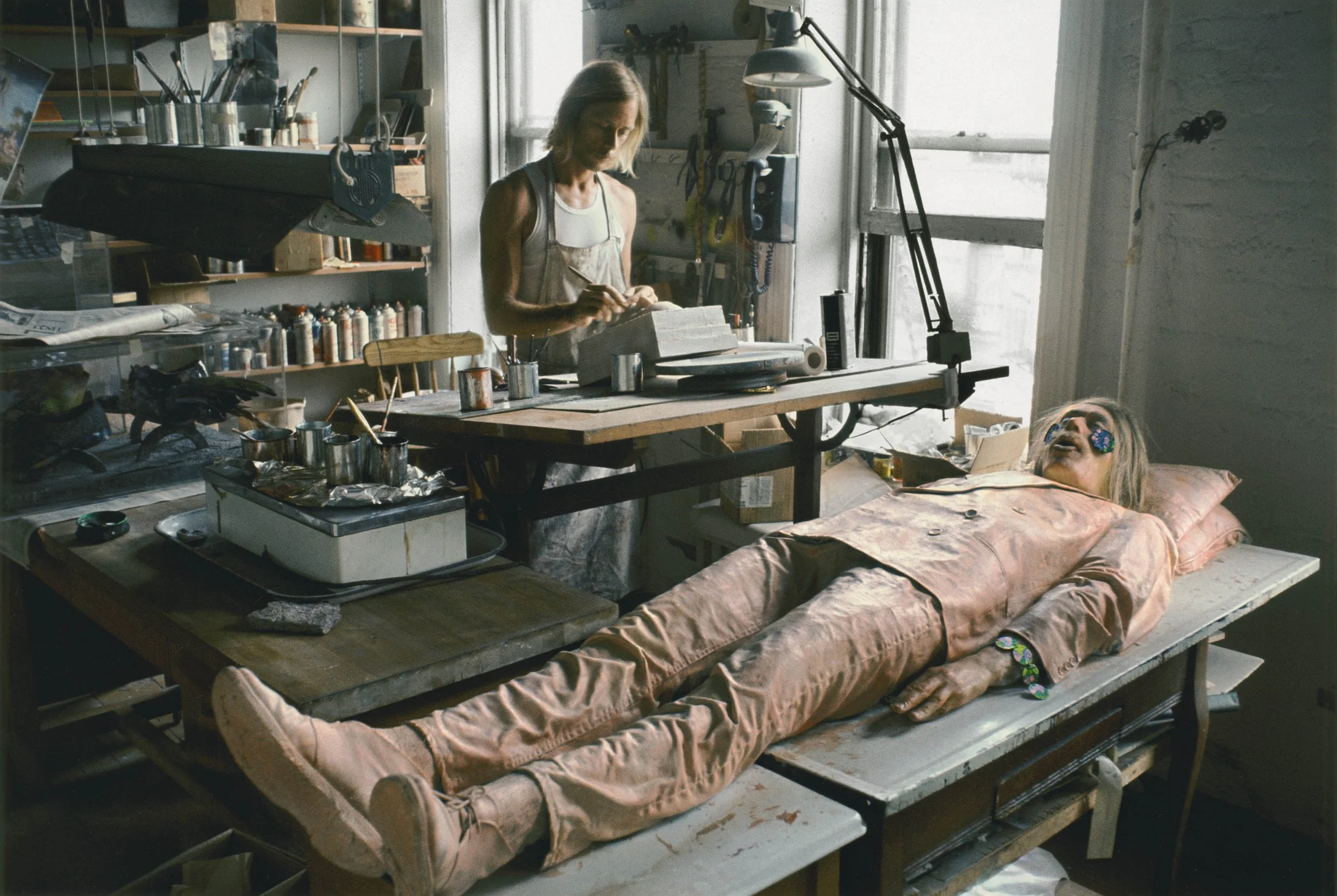Fraenkenstein | Fraenkel Gallery
John Waters, Reconstructed Lassie, 2012, chromogenic print, © John Waters, courtesy Fraenkel Gallery, San Francisco.
Written by Max Wiener
The allure of the unknown becomes glaringly familiar in the Fraenkel Gallery’s stunning new exhibition.
Humans fear the unknown. Our chemical makeup craves familiarity and routine, something lasting to settle us into habitual decision making. The avant-garde brushes up against us like sandpaper at first, its unfamiliarity imprinting on our psyche. Can we become more comfortable with the unknown?
Perhaps the most iconic story associated with the aforementioned points is Frankenstein, Mary Shelley’s timeless 1818 novel about prejudice and appearances, and monsters of our own making. The man-made monster at the center of the novel serves as the perfect metaphor for fabricated hysteria. The book’s resonant themes—namely, prejudice and judging a book by its cover—have been translated time and time again, most recently in Fraenkenstein, the new exhibition at San Francisco’s Fraenkel Gallery. Using a multi-medium presentation of painting, sculpture, film, collage, and photography, the exhibition tells the stories of the previously unknown while tying in modern day thematic elements to relate with any audience. Our society has dramatically evolved since the release of Mary Shelley’s most famous work, but Fraenkenstein proves that her work remains just as relevant and poignant today. The exhibition opens on May 30 and has a scheduled closing date of August 10.
Diane Arbus, “Frankenstein's Daughter” [close up with shoulders] 1958, gelatin silver print, © The Estate of Diane Arbus.
The presented photography in Fraenkenstein has a captivating aura that dominates the walls of the space. The typical blacks and whites of the Frankenstein character draw you in and command your gaze with a near magnetic effect. They provide the backbone for the series’ thematic exploration presented throughout all mediums, acting as a metaphorical cornerstone for us to use to our artistic advantage. While we approach the unfamiliarity of some of the other works, we return back to the imagery as a sort of road map.
Kota Ezawa, The Scream, 2016, transparency in lightbox, © Kota Ezawa, courtesy Fraenkel Gallery, San Francisco.
What Fraenkenstein does exceptionally well is use the original story’s main themes as a mirror to our own society, sparing us of any unnecessary commentary while allowing our own minds to do the exploring. Technology is our Frankenstein, a marvelous man-made creation that many people fear will overtake us and rule us in the future. While technology is central to human advancement, its rapid acceleration has become an object of fear for many, especially Artificial Intelligence. Many argue that we are essentially creating more advanced versions of humans that will soon surpass ourselves. If Fraenkenstein proves anything, it’s that the human element of life - of art - is alive, Frankenstein pun intended. We must not be fearful of what is truly out of our control. Art and life is what is right in front of us and is powered by our own minds and hands. Let us not fret about future woes while we work to improve our current world tenfold. Our minds will soothe and our world will improve if we look to create a better space for ourselves to live in while we still have a grasp on it.
Peter Hujar, Thek Working on the Tomb Figure, 1967, pigment print, © 2024 The Peter Hujar Archive, LLC / Artists Rights Society (ARS), New York. Courtesy Fraenkel Gallery, San Francisco.











